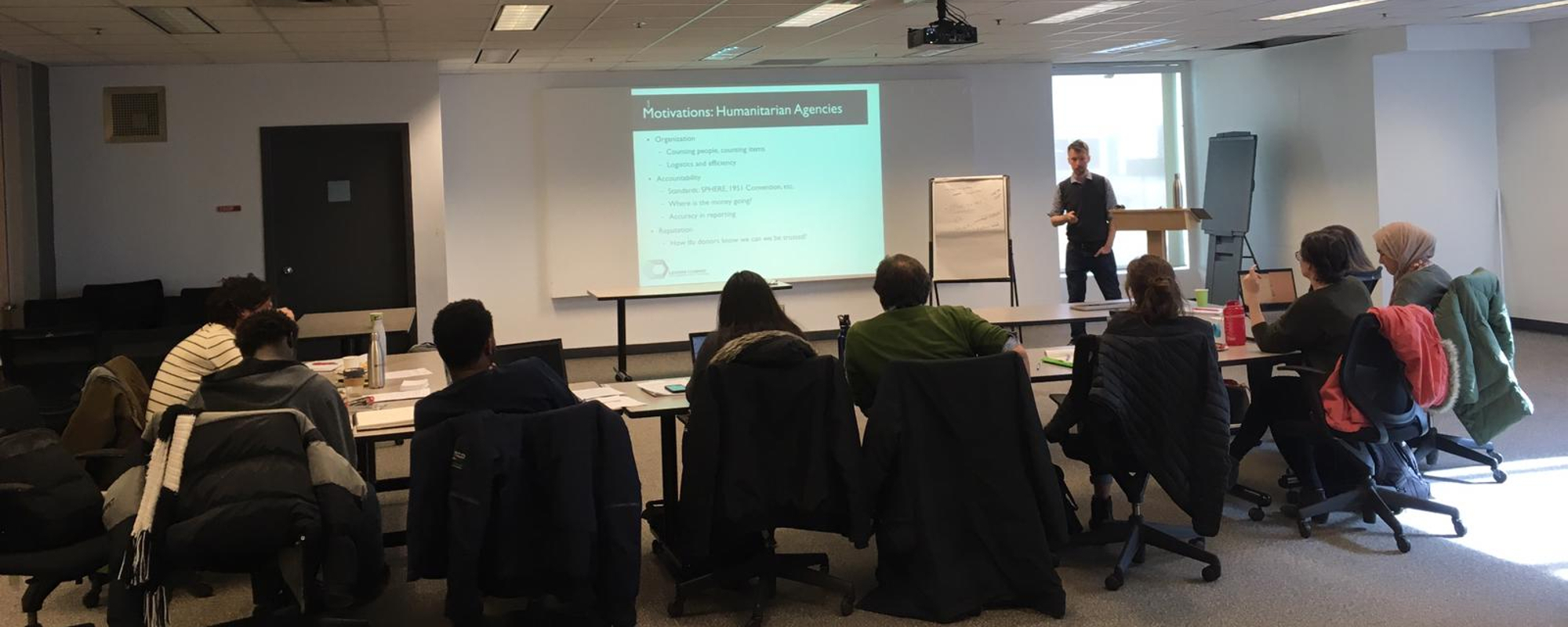Simulations and “red teaming” are already well-established tools in the medical, business, and peacebuilding sectors. These methods are quickly gaining similar recognition as markedly effective tools for humanitarian teaching and analysis. Here are just a few examples of what makes the Lessons Learned approach unique.
Step into our “Stakeholder Embodiment System”.
Our unique, immersive simulation modules put participants in the decision-making spaces of stakeholders via dynamic models built on real-life experiences, so you can really understand what hopes and fears motivate people with different stakes in humanitarian crises. This will make you a better, more aware humanitarian worker.
A safe space to fail.
Making mistakes in humanitarian work can have real, dire consequences for people who are in need of relief. To experienced humanitarian field workers, new ideas and new ways of operation can (quite rightly) look more like unacceptable risks than opportunities to serve people better. Our sims give you a unique space to experiment, test out new approaches, and make mistakes without real-life consequences—then provide dynamic feedback, analyse pitfalls, and revise the approach until participants succeed as a collective.
We can support your team in generating and testing new approaches to old problems, by giving them a safe space to fail.
Get creative.
Many training systems advertise “critical thinking”, “problem solving”, and “strategic thinking” among their learning outcomes. But these hard-to-define skills don’t come from the lecture hall—they are honed when the clock is ticking and decisions are made. LLST provides a real road-map to achieving these learning goals by putting participants in the position to grapple with real challenges and dilemmas, and asking, “what will you do next?”
Learning through doing.
You can sit through as many lectures as you want, or read every method book and field report—but until you actually go through the act of performing a task, you don’t really know how it’s done. You are never quite sure how you will react to stress, time pressure, social demands and high stakes of a crisis until you experience it. Most long-time humanitarians are forced to learn, practice, and test this essential skillset on the job, when real lives are on the line. LLST provides a safer, more responsible way to practice, test, and learn. Then, once you’ve done it, you’ll remember it forever—that’s just how we’re wired.
Omniscient perspective.
In real crises, there are no cross-sectional check-ins, no personal or collective pauses to reflect, no group debriefs involving all concerned stakeholders. LLST builds guided reflection into every one of our training courses and modules—in fact, we consider regular reflection and debriefings as one of the most important elements of our approach. Participants have multiple opportunities to freeze the action and take a cross-cutting look at how things are going cross the whole (simulated) crisis. In our experience, nothing generates “a-ha!” moments like a good debrief.
Controlled chaos.
Our simulations are explicitly modelled to capture the chaos that emerges when a myriad of wills converge in the stressful pressure-cooker of a humanitarian crisis. But here, unlike in real life, we give you the opportunity stop, take a breath, and look at all the moving parts. Occasionally.
Modeling the whole system.
Our “whole system” approach to simulation design allows participants to see how each piece works together. You can’t understand a machine by studying one component—why would a humanitarian crisis be any different? The dynamics of an emergency arise from many different, insular social spaces interacting in concert—or in discord.
Many simulations out there are scripted scenarios, populated by hired actors and driven forward by artificial “injects” managed by facilitators. That approach is extremely useful in exposing trainees to a single, specific experience. It can also provide an uncritical depiction of “good-guy” protagonists in perpetual struggle with the faceless “bad-guys” out to do no good.
Our simulations are built on dynamic models which flesh out those antagonists, trace the rationality in every position, and expose participants to those points of view. We believe that opportunity lies in listening, reflecting, and making decisions based on real-life goals and motivations.
And so much more.
Participants consistently report that simulations are exciting, engaging, stimulating, immersive—simply put, a better way to learn. Contact us at info@llst.ca to see how we can put our approach to work for you or your team.

